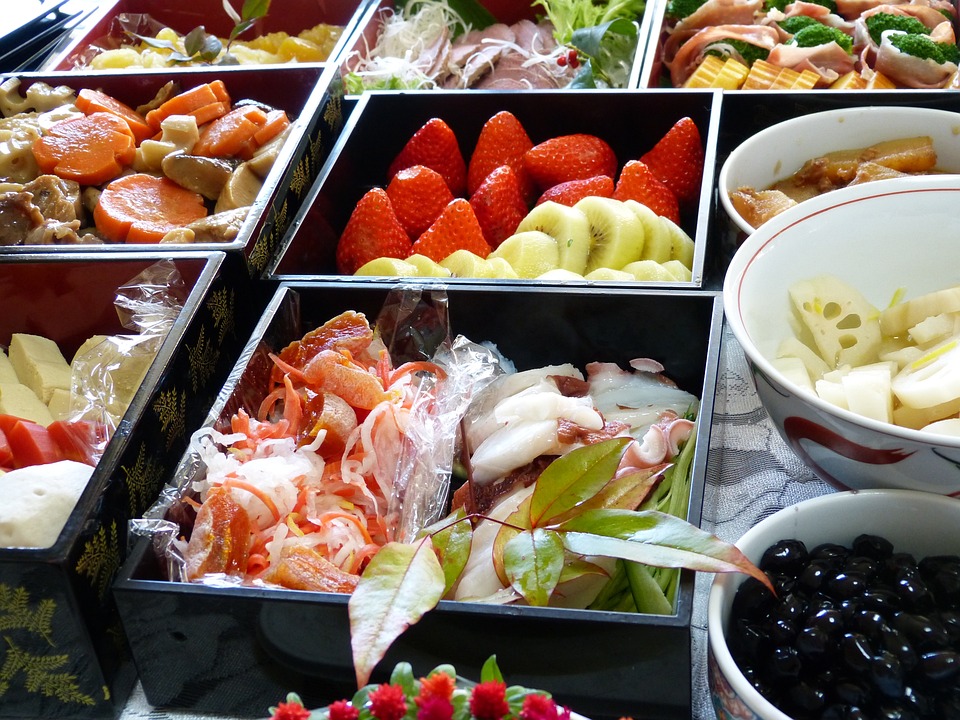[ad_1]
Japan is known for its delicious sushi, sashimi, and bento boxes, but there’s a whole world of fermented foods beyond these popular dishes. From miso to soy sauce to pickles, Japan has a rich tradition of fermenting foods that goes back centuries. These fermented foods not only add unique flavors to Japanese cuisine but also offer numerous health benefits. Let’s take a journey through Japan’s diverse fermented foods and discover the wonders of fermentation in Japanese cooking.
Miso
Miso is a traditional Japanese seasoning produced by fermenting soybeans with salt and koji (a type of fungus). The mixture is then left to ferment for varying lengths of time, resulting in different types of miso with distinct flavors and colors. Miso is commonly used in soups, marinades, and glazes, adding a rich umami flavor to dishes. It is also packed with beneficial probiotics and nutrients, making it a staple in Japanese cuisine for both flavor and health reasons.
Soy Sauce
Soy sauce is another essential fermented condiment in Japanese cooking. It is made by fermenting soybeans, wheat, salt, and koji with Aspergillus oryzae, a type of mold. The mixture is left to brew for several months to develop its deep, savory flavor. Soy sauce is used as a seasoning in a wide variety of Japanese dishes, from sushi to stir-fries, providing a salty and rich flavor to the food. Along with its distinctive taste, soy sauce also contains beneficial amino acids and antioxidants, adding to its appeal for both flavor and health.
Pickles (Tsukemono)
Japanese pickles, or tsukemono, are a diverse array of preserved vegetables that are typically pickled in salt, rice bran, or vinegar. There are various types of tsukemono, including umeboshi (pickled plums), takuan (pickled daikon radish), and shiozuke (salt pickles). These pickles are often served as accompaniments to meals, providing a crunchy, tangy contrast to the main dishes. Tsukemono are not only delicious but also aid in digestion and provide a good source of dietary fiber and essential nutrients.
Koji
Koji is a key ingredient in the fermentation process of many Japanese foods, including miso, soy sauce, and sake. It is made by inoculating steamed rice with Aspergillus oryzae mold spores and then allowing it to ferment and develop enzymes that break down the starches and proteins in the grains. Koji is responsible for initiating the fermentation process and imparting unique flavors to the final products. It is an essential element in Japanese fermentation and is revered for its transformative power in creating a wide range of fermented foods.
Sake
Sake, a traditional Japanese rice wine, is produced through the fermentation of polished rice with koji mold and yeast. The fermentation process of sake involves multiple steps, including the conversion of starches in the rice into sugars by koji enzymes and the subsequent conversion of sugars into alcohol by yeast. The result is a complex and aromatic beverage that holds a significant place in Japanese culture and cuisine. Sake is not only enjoyed as a popular alcoholic beverage but also used in cooking for adding depth and flavor to dishes.
Conclusion
Japan’s diverse fermented foods offer a window into the country’s rich culinary traditions and the art of fermentation. From the umami-rich miso to the savory soy sauce, and the tangy pickles, these fermented foods contribute to the depth and complexity of Japanese cuisine. Not only do they add unique flavors to dishes, but they also provide numerous health benefits, from beneficial probiotics to essential nutrients. The use of koji, a type of mold, in the fermentation process further underscores the importance of fermentation in Japanese cooking. As we continue to explore the world of fermented foods, Japan’s offerings stand out for their depth of flavor, cultural significance, and health benefits.
FAQs
What are the health benefits of fermented foods in Japanese cuisine?
Fermented foods in Japanese cuisine, such as miso, soy sauce, and pickles, are rich in beneficial probiotics, which support digestive health and contribute to overall well-being. They also contain essential nutrients, such as amino acids and antioxidants, which are beneficial for health.
What is the role of koji in Japanese fermentation?
Koji, a type of mold, is a key ingredient in the fermentation process of many Japanese foods. It is responsible for initiating the fermentation process, breaking down starches and proteins in grains, and imparting unique flavors to the final products.
How are fermented foods used in Japanese cooking?
Fermented foods are used in a wide variety of Japanese dishes, from soups and marinades to condiments and beverages. They add depth of flavor, richness, and complexity to the dishes while also providing health benefits.
[ad_2]





Comments